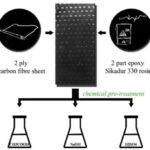2023-09-22 バーミンガム大学
◆研究者は、ミジンコの集団を排水処理プラントに取り付け、その化学的な耐性に基づいて選ばれた品種を活用しました。この技術は水の再利用を可能にし、環境への有害な影響を減少させる可能性があります。
<関連情報>
- https://www.birmingham.ac.uk/news/2023/waterfleas-hold-key-to-cleaner-environment-and-better-human-health
- https://www.sciencedirect.com/science/article/pii/S0048969723058515?via%3Dihub
水再生にミジンコを利用: 自然を利用した三次廃水処理技術 Harnessing water fleas for water reclamation: A nature-based tertiary wastewater treatment technology
Muhammad Abdullahi, Iestyn Stead, Sophie Bennett, Rafael Orozco, Mohamed Abou-Elwafa Abdallah, Sara Jabbari, Lynne E. Macaskie, Alexandra Tzella, Stefan Krause, Bushra Al-Duri, Robert G. Lee, Ben Herbert, Peter Thompson, Megan Schalkwyk, Samuel Getahun, Karl D. Dearn, Luisa Orsini
Science of The Total Environment Available online: 20 September 2023
DOI:https://doi.org/10.1016/j.scitotenv.2023.167224

Highlights
•A scalable, low-cost, low-carbon, and retrofittable tertiary water treatment biotechnology for the removal of persistent chemical pollutants
•At laboratory scale, removal efficiency is 90% for diclofenac, 60% for arsenic, 59% for atrazine and 50% for PFOS.
•Sustained removal efficiency of diclofenac was validated over four weeks at prototype scale.
•The Daphnia-based technology has technical, commercial and sustainability advantages over established and emerging treatments.
Abstract
Urbanisation, population growth, and climate change have put unprecedented pressure on water resources, leading to a global water crisis and the need for water reuse. However, water reuse is unsafe unless persistent chemical pollutants are removed from reclaimed water. State-of-the-art technologies for the reduction of persistent chemical pollutants in wastewater typically impose high operational and energy costs and potentially generate toxic by-products (e.g., bromate from ozonation). Nature-base solutions are preferred to these technologies for their lower environmental impact. However, so far, bio-based tertiary wastewater treatments have been inefficient for industrial-scale applications. Moreover, they often demand significant financial investment and large infrastructure, undermining sustainability objectives. Here, we present a scalable, low-cost, low-carbon, and retrofittable nature-inspired solution to remove persistent chemical pollutants (pharmaceutical, pesticides and industrial chemicals). We showed Daphnia‘s removal efficiency of individual chemicals and chemicals from wastewater at laboratory scale ranging between 50 % for PFOS and 90 % for diclofenac. We validated the removal efficiency of diclofenac at prototype scale, showing sustained performance over four weeks in outdoor seminatural conditions. A techno-commercial analysis on the Daphnia-based technology suggested several technical, commercial and sustainability advantages over established and emerging treatments at comparable removal efficiency, benchmarked on available data on individual chemicals. Further testing of the technology is underway in open flow environments holding real wastewater. The technology has the potential to improve the quality of wastewater effluent, meeting requirements to produce water appropriate for reuse in irrigation, industrial application, and household use. By preventing persistent chemicals from entering waterways, this technology has the potential to maximise the shift to clean growth, enabling water reuse, reducing resource depletion and preventing environmental pollution.


